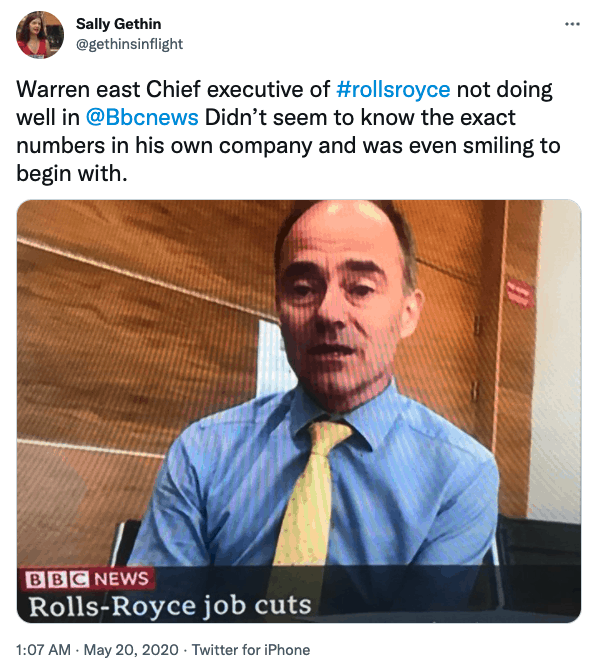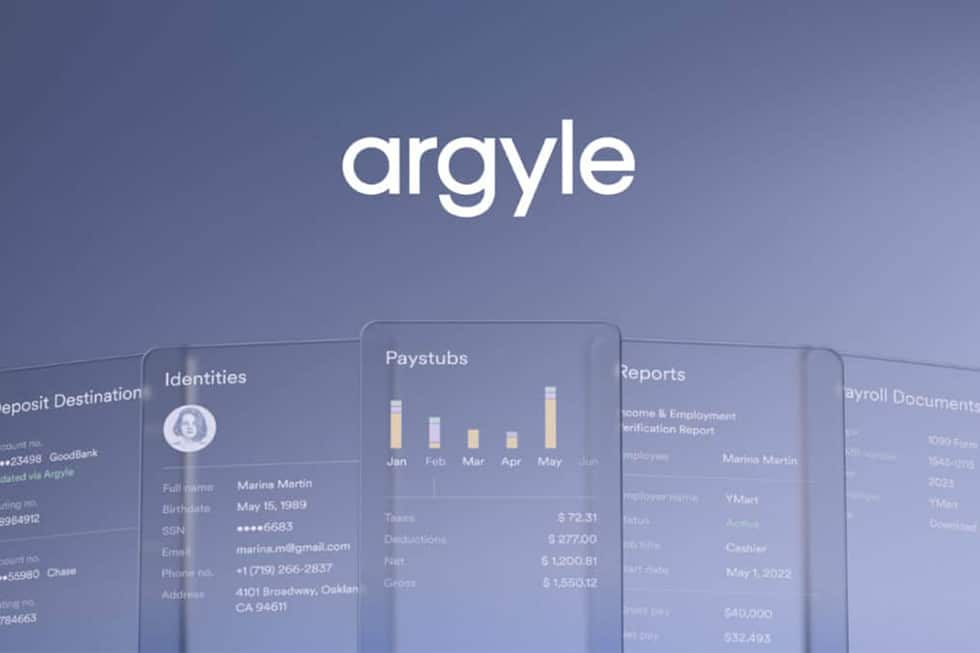There are two types of spokespeople in this world. One seeks out constant media training to improve upon this skill set, and the other takes on media training with a “one and done” approach. The former realizes that even the most skilled spokesperson needs consistent training, practice, and experience to effectively convey an organization’s point of view under any circumstance. The latter might be an effective spokesperson already but falters with uncomfortable questioning or under crisis situations in which an interviewee and the company might be under greater scrutiny.
When it comes to media training, everyone can benefit.
The good, the bad, the funny
We’ve seen spokespeople flop on camera before. Some left viewers laughing…
While others left audiences and reporters completely confused….
Under more dire circumstances, there are others who simply can’t read the room, like last year’s Rolls Royce CEO smirking during an interview about job cuts.

Needless to say, even the most powerful, well-spoken, and well-trained corporate executives benefit from coaching and media training at all stages of their careers.
There are many aspects and components of media training that occur beyond those initial workshops and sessions. Once you’ve learned how to prepare for media interviews and have every corporate message memorized and rehearsed, comes the second layer of media training.
This secondary layer builds off the foundational work and requires a new level of confidence and finesse in a media interview.
Stay in control
As a spokesperson, you are in control of the media interview, not the other way around. Interviewers ask tough questions. It’s their job to get to the bottom of a specific topic and give their readers, listeners, or viewers the clarity and facts they deserve.
This means you must know the ins and outs of your sector and business, while also being able to spot opportunities to showcase your message or viewpoint in a thoughtful, clear, and engaging way. Conveying all of this in a five-minute TV segment is easier said than done. To prepare, get on the same page with the heads of multiple departments, particularly the legal team. Learn exactly what topics are off limits to discuss in detail, such as pending litigation, and engage with other key department executives to get a full picture of what is occurring within the company.
Even if you’re a CEO with full visibility of the business, there is still room for error when you’re disconnected from the day-to-day operations. For example, naming partnerships or customers on the record that have not been approved by the legal department or the other company can hurt the relationship your business has with them. In extreme cases, interviewees have accidently leaked material news to a reporter that created an avalanche of problems internally between the investor relations department, communications, marketing, sales and legal.
Staying in control of the conversation requires an understanding of every layer in the business. And while it’s important to know every intricate detail, successful spokespeople take the time to connect with department heads regularly and involve them in the preparation process prior to an interview.
Master the delivery
Media training 101 teaches you about bridging techniques and how to divert challenging questioning into opportunities for your corporate messaging. But once you’ve mastered that, comes the art of the delivery.
Tone, body language, eye contact, and voice inflection are a part of that art. Stage actors use these techniques to convey emotion and energy within their character, and it’s not any different for a spokesperson.
To begin working on delivery, watch recordings of your media interviews on mute. Can you infer what was being discussed based on body language and facial expressions alone? Can you decipher how you were feeling at that moment?
Now try this exercise by watching other interviewees on mute. You’ll find that even master orators fumble in speeches and interviews with their body language. Michelle Obama recalls a moment in her memoir Becoming where her team made her watch a live speech she gave without the sound on. She discovered that despite an inspiring, positive, and encouraging message, her facial expression and body language conveyed anger and disapproval. This made it all too easy for opponents on the campaign trail to mislabel and attack her. With this knowledge, she began the work necessary to master the delivery of her speeches and interview.
Master your delivery with practice. Work with your communications team on media training and a speech coach if you’re also aiming to speak to large crowds or in panels at conferences.
Make it punchy and memorable
One of the toughest things to do as a spokesperson is to convey your corporate message or viewpoint in a single soundbite. However, people remember – and quote – soundbites because they are short and to the point. Part of working with your communications team on media training is learning how to customize your message into memorable soundbites for maximum impact. This requires analyzing the audience, knowing their level of knowledge and understanding, and effectively communicating complex subjects into digestible messages.
With proper training and plenty of rehearsals, you will begin to find new and interesting ways to communicate your perspective in a confident and concise manner. Unfortunately, there’s no single hack, tip or trick to help you with this. It simply comes down to consistent training and practice.
Before going into any interview (be they real or for practice), make sure you have a clear story in mind, prepare core messages in short bullet points, and perhaps a few statistics, anecdotes, or analogies to put in your back pocket. Audiences may not recall the details of your interview, but they will remember a creative antidote or statistic that brings the point home.
This also comes down to simplicity. Spokespeople often forget that journalists are looking for facts, not hyperbole or industry jargon. Using terms like “industry-leading” or tough terminology makes it harder to connect with audiences. Instead, work with your PR team to break these messages down. Remove and condense your talking points based on the audience you’re speaking to and the time you have available for the interview. Finally, create an interesting discussion with the reporter so that you’re memorable, accessible, and ultimately, get invited back.
The road is long and worthwhile
Becoming an excellent spokesperson is part of a long and never-ending journey. Subject matter experts that treat media training as a one-off occasion miss out on developing a critical and marketable skill and ultimately miss the mark on communicating what’s important to their company.
This is why bringing in an expert team of PR and communications professionals to support your media training efforts on a consistent basis and can provide valuable, constructive feedback after each interview is valuable. PR professionals can find your blind spots, fine-tune your core messages, and help you improve your delivery over time.
To learn more, visit Media and Presentation Training.





